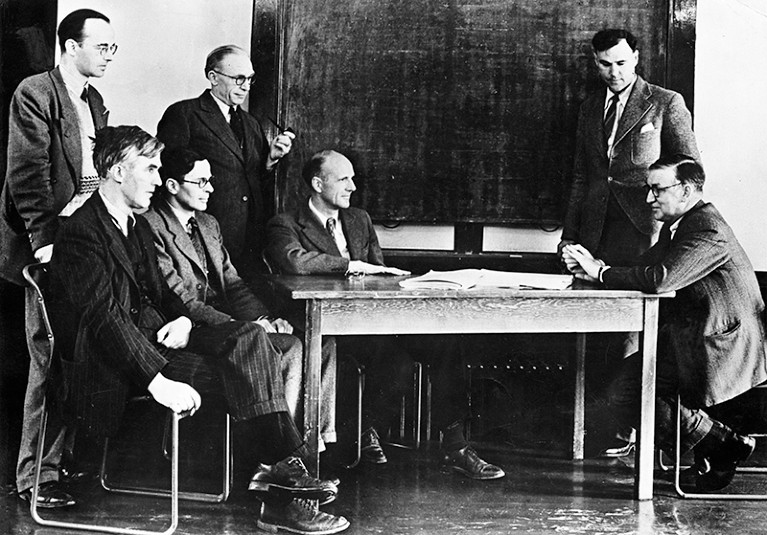
Klaus Fuchs (far left) in 1948 with colleagues at the UK atomic-energy laboratory in Harwell.Credit: ullstein bild/Getty
Trinity: The Treachery and Pursuit of the Most Dangerous Spy in History Frank Close Allen Lane (2019)
Frank Close begins Trinity, his book about the physicist and Second World War spy Klaus Fuchs, obliquely. He starts not with Fuchs’s eight-year stint sending top-secret details of British and US nuclear bombs to the Soviet Union, but with his mentor and eventual confessor, Rudolf Peierls.
Close — emeritus professor of physics at the University of Oxford, UK — hasn’t written the first biography of Fuchs, but his must be the most comprehensive. As he explains, Fuchs was an anti-Nazi refugee from Germany and a student at the University of Bristol, UK, when he met Peierls, a brilliant nuclear physicist who had left Germany in 1932 to eventually become a British citizen. Peierls invited Fuchs to join a group of scientists at the UK Ministry of Aircraft Production, called the MAUD committee and tasked with determining the feasibility of building an atomic bomb in Britain.
Atomic bombs through wars hot and cold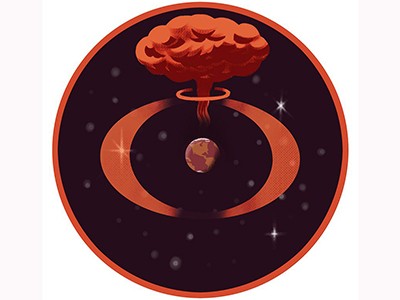
Fuchs boarded with the Peierls family and fitted in happily. The children and dogs liked him. Rudolf’s wife Eugenia Peierls, whose genius was to see through people’s facades, thought Fuchs a highly honourable man. Within months of being accepted into the family, Fuchs began his long betrayal. His first step was sharing knowledge of the MAUD project with Soviet military intelligence. (Although allied with Britain, the Soviet Union had only just pulled out of a two-year non-aggression pact with Nazi Germany, and Britain didn’t trust it — certainly not enough to share its bomb project.)
Peierls had helped to explain the atomic nucleus. Fuchs’s physics was never as stellar, but he was a superb solver of equations. He worked for Peierls on MAUD, exploring ways to refine uranium for the bomb. In 1944, he accompanied Peierls to the heart of the Manhattan Project in Los Alamos, New Mexico. Six weeks before the Trinity test, the first nuclear detonation, Fuchs leaked details to the Soviets. Soviet leader Joseph Stalin knew about Trinity before the newly sworn-in US president, Harry Truman, did.
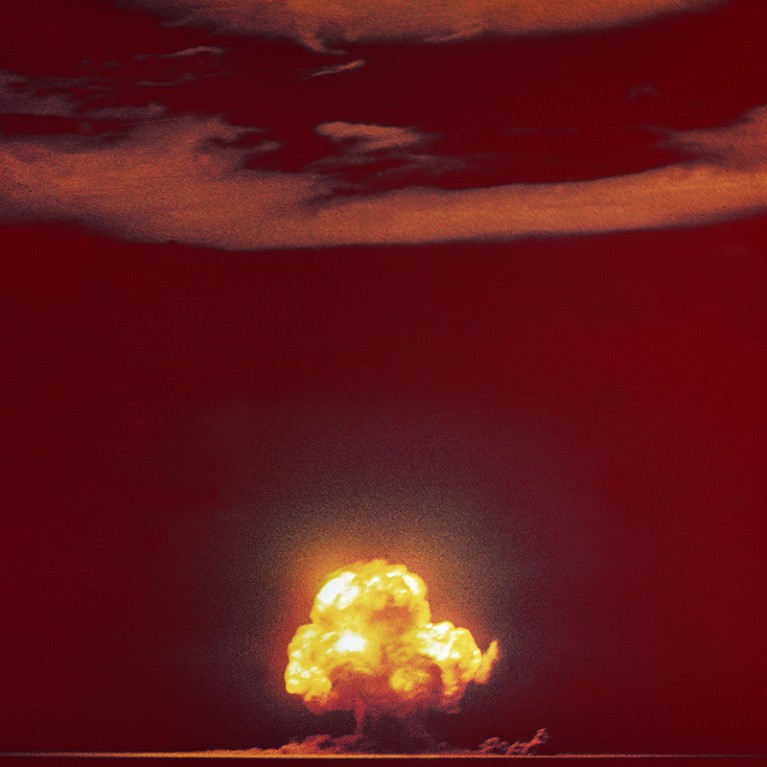
The Trinity test in New Mexico on 16 July 1945 marked the first detonation of a nuclear weapon — a plutonium implosion device.Credit: Jack Aeby/Planet Pix via ZUMA
In 1945, still at Los Alamos, Fuchs worked on the second-generation nuclear weapon, the hydrogen bomb. Again, he passed the research on to the Soviet Union, which used it to kick-start and, some years later, successfully test its own bomb. Fuchs was reassigned from Los Alamos to the UK atomic-energy lab in Harwell in 1946. By then, says Close, he had a status unique in Britain: as an “encyclopaedia of knowledge” on the physics and engineering of both atomic and thermonuclear weapons.
Postwar revelations
After Germany’s surrender, Peierls returned to Britain and academic nuclear research. Although still consulting on nuclear weapons, he — like many Manhattan Project scientists — worked to stop their spread. Fuchs stayed on at Harwell. By 1949, he had funnelled enough intelligence to the Soviets to enable them to estimate both British progress on nuclear weaponry and the size of US nuclear stockpiles.
Fuchs was finally identified in the summer of that year — just after he stopped spying. Parts of the Soviet messages known as the VENONA intercepts had been decoded by the FBI. Shared with the British intelligence agency MI5, they clearly indicated that the Manhattan Project had a highly placed spy, code-named CHARLES, now working in Britain. MI5 began to systematically eavesdrop on Fuchs, leading to his interrogation and, on 27 January 1950, confession. Fuchs was arrested in early February.
Days later, in prison, he confessed to Peierls. Peierls, who told his wife in an intercepted phone call that he felt like a “complete idiot”, first thought Fuchs must have had a psychological breakdown. He then realized that Fuchs actually had self-control so monumental that he’d been able to deceive colleagues and friends for years. Eugenia Peierls wrote to Fuchs: “You were enjoying the best of the world you were trying to destroy. It is not honest.” His response was a mix of self-recrimination and self-justification. Rudolf Peierls offered to give whatever help he could once Fuchs’s sentence was served; Fuchs never responded.
The forgotten quantum pioneer who turned wartime spy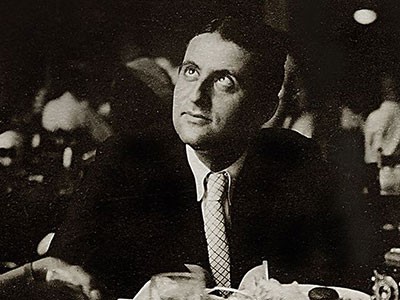
Trinity reads like a spy novel: Close writes the human stories well. Fuchs’s sister Kristel Heineman, for instance, helped to pass along documents. Also featured are his Soviet handlers, the MI5 and FBI trackers, and morally corrupt FBI director J. Edgar Hoover, whom Truman suspected of wanting to create a US Gestapo. Close, who had access to UK security files, also folds in context that includes the innate uncertainties of intelligence-gathering and the political atmosphere in which it operated, and clear descriptions of the physics Fuchs leaked. In particular, he details the spy’s unlikely evasion of detection during security screenings at both Harwell and the Manhattan Project, facilitated by years of intelligence misjudgements and screw-ups. Afterwards, MI5 and the FBI blamed each other for their oversights. Then, with the blessings of Hoover and MI5 director Percy Sillitoe, they agreed to cover for each other.
Naive reasoning
By framing Fuchs’s career with the story of his humane mentor Peierls, Trinity reveals a man familiar with betrayal, with motives he thought were pure. Fuchs was not paid. He had great faith in communism and, by helping the Soviet Union, hoped to return Germany to a socialist ideal. After the arrest, Peierls asked of Fuchs whether he believed the Soviet system was superior. He replied that after the Soviets had “taken over everything”, he would expose their system’s flaws. Peierls hadn’t realized Fuchs was so naive, “as if he expected to get away with it”.
And, in a way, he did. He was tried and sentenced to 14 years in prison — first at Wormwood Scrubs in London, then Wakefield. The fallout from his arrest included the convictions of fellow spies in the United States: David Greenglass, who was sentenced to prison, and Julius and Ethel Rosenberg, who were executed. Fuchs was spared a death sentence because the Soviet Union was an ally when he began spying for it. He served nine years, then moved to East Germany, where he worked at the Central Institute for Nuclear Research in Dresden. He gained scientific acclaim and survived for another three decades.
Trinity gives the impression that Fuchs, a good theoretical physicist and devoted spy, took pride in both. He was certainly effective. Close quotes nuclear-bomb historian Lorna Arnold, who said that the hydrogen bomb’s parentage in various countries is in doubt. But, given his work in the United States and Britain and the information he leaked, “I suspect Klaus Fuchs was grandfather to them all”. Close’s Fuchs is someone we come to understand, but don’t forgive.

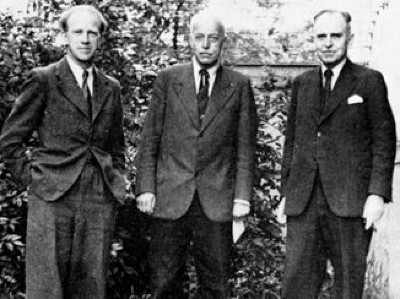
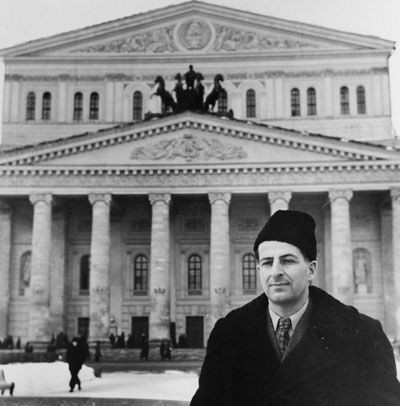
 Atomic bombs through wars hot and cold
Atomic bombs through wars hot and cold
 The forgotten quantum pioneer who turned wartime spy
The forgotten quantum pioneer who turned wartime spy
 Overhearing Heisenberg
Overhearing Heisenberg
 Physics: Atomic secrets
Physics: Atomic secrets







